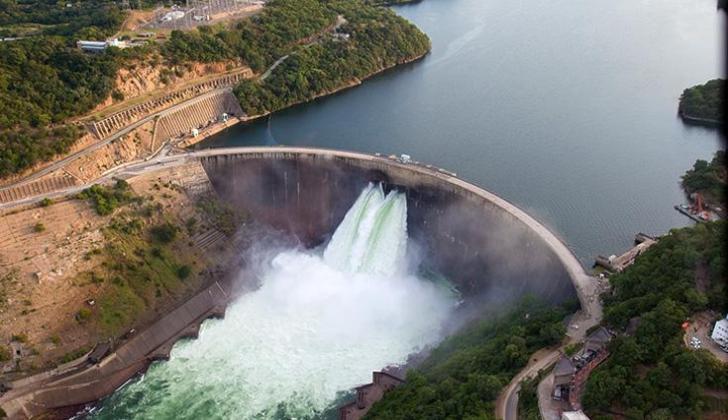News / National
ZRA to conduct leakage test on Kariba Dam plunge pool
7 hrs ago | Views

The Zambezi River Authority (ZRA) has announced that a controlled leakage test on Sluice 3 at Kariba Dam will take place on 2 July 2025, marking a critical milestone in the ongoing Kariba Dam Rehabilitation Project (KDRP). The test is part of a broader initiative to restore and secure the long-term structural integrity and operational reliability of the dam, which serves as a major source of hydroelectric power for both Zimbabwe and Zambia.
The Kariba Dam Rehabilitation Project encompasses major engineering works on the dam's plunge pool, spillway, and coffer dam. The plunge pool, which plays a vital role in absorbing the energy from water released through the spillway, is being reshaped and reinforced to ensure its stability. The spillway, essential for managing water discharge during periods of high inflow, is undergoing crucial refurbishments. The coffer dam, a temporary structure that enables dry working conditions for repairs, has been instrumental in facilitating this work.
ZRA said in a statement that the upcoming leakage test on Sluice 3 is a routine engineering procedure that follows similar successful tests previously conducted on Sluices 1 and 2. The authority emphasised that the test is necessary to ensure the newly refurbished gate functions precisely as designed.
During the test, approximately 1,500 cubic metres of water will be released. While the volume may sound large, ZRA explained that it is minimal in practical terms - enough to generate electricity for just three seconds. The release will be tightly controlled and monitored by experts throughout the process.
The ZRA reassured the public that the activity is planned and should not cause alarm. In its public notice, the authority stated: "This is a planned activity, and members of the public are kindly advised not to be alarmed. Everything is under control, and the test will be closely monitored by experts."
The Kariba Dam Rehabilitation Project, supported by international partners including the World Bank, the African Development Bank, and the European Union, aims to extend the dam's lifespan and enhance its operational safety. By addressing long-standing structural issues, the project is expected to strengthen regional energy security and support sustainable power generation for decades to come.
As the KDRP moves forward, the successful execution of tests such as this one is crucial in ensuring that the infrastructure upgrades meet global safety and performance standards.
The Kariba Dam Rehabilitation Project encompasses major engineering works on the dam's plunge pool, spillway, and coffer dam. The plunge pool, which plays a vital role in absorbing the energy from water released through the spillway, is being reshaped and reinforced to ensure its stability. The spillway, essential for managing water discharge during periods of high inflow, is undergoing crucial refurbishments. The coffer dam, a temporary structure that enables dry working conditions for repairs, has been instrumental in facilitating this work.
ZRA said in a statement that the upcoming leakage test on Sluice 3 is a routine engineering procedure that follows similar successful tests previously conducted on Sluices 1 and 2. The authority emphasised that the test is necessary to ensure the newly refurbished gate functions precisely as designed.
During the test, approximately 1,500 cubic metres of water will be released. While the volume may sound large, ZRA explained that it is minimal in practical terms - enough to generate electricity for just three seconds. The release will be tightly controlled and monitored by experts throughout the process.
The ZRA reassured the public that the activity is planned and should not cause alarm. In its public notice, the authority stated: "This is a planned activity, and members of the public are kindly advised not to be alarmed. Everything is under control, and the test will be closely monitored by experts."
The Kariba Dam Rehabilitation Project, supported by international partners including the World Bank, the African Development Bank, and the European Union, aims to extend the dam's lifespan and enhance its operational safety. By addressing long-standing structural issues, the project is expected to strengthen regional energy security and support sustainable power generation for decades to come.
As the KDRP moves forward, the successful execution of tests such as this one is crucial in ensuring that the infrastructure upgrades meet global safety and performance standards.
Source - Newsday













































